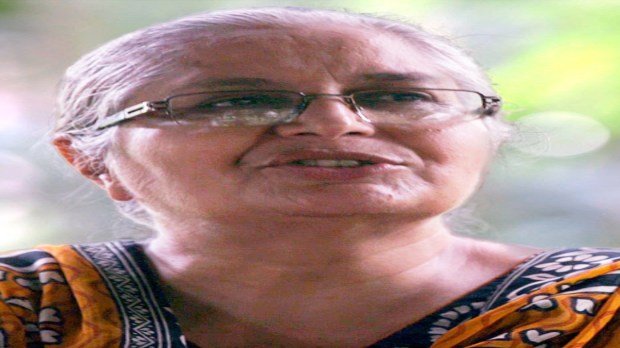On Kolkata as an emerging destination for jobs
Sanjay Kumar Das: The West Bengal government has been silently and consistently improving its information infrastructure for the last decade. We now boast 33 information technology buildings, of which 22 are IT parks. The government is looking at infrastructure development and recycling IT products or devices that are not in use and are becoming electronic waste. We might be the first state to have three definitive and powerful data centres.
West Bengal has the highest number of people with two mobile connections and two Internet connections on the same mobile phone. So you know how much data-crazy we are. That’s why, after the West Bengal Data Centre Policy 2021, we have decided to have 18 data centres. They are in different stages of completion and seven are just about to be completed. The 240 acre of, Bengal Silicon Valley Hub, which the chief minister inaugurated in August 2018, is completely taken up. Infosys has opened up its new campus. LTIMindtree is also coming up.
Our State Data Center currently houses over 10,000 applications, including public-facing flagship services. Applications like Karmasathi and Duare Sarkar are accessible with just a click, thanks to this infrastructure. We also have a full-time disaster recovery data centre at the Udyog IT Park and are developing a GPU-as-a-service data centre. This will allow schools, colleges, universities, professionals, and even gamers to leverage advanced processing capabilities for various applications.
West Bengal is the India of tomorrow. The state government is investing heavily in helping students finish school by understanding the skill gaps between students and professionals through various services it offers. So those skill gaps are being attended to by taking all of them through skill-building activities through the National Association of Software and Service Companies (NASSCOM) and BCCI. We have incubation centres. Our Subidha platform ensures seamless movement through eight land ports across three neighboring countries.
Leading IT companies like TCS, which already employs over 54,000 people in the state, plan to expand significantly. Similarly, Cognizant is revamping its infrastructure, and during the pandemic, companies like CalSoft began operations here. Additionally, Global Foundries and its ancillary industries are showing interest in West Bengal. The state has three major strengths: a highly skilled and affordable workforce, minimal attrition rates, and innovative thinking among its youth.
On inwards migration in Kolkata
Sandipan Saha: Kolkata handles nearly double its residential population on a daily basis. Currently, the city’s resident population is approximately 60 lakh. Each day, another 60 lakh individuals come into Kolkata for their livelihoods, returning home by evening. This dynamic presents a significant challenge, requiring us to ensure the city functions smoothly during these peak hours.
We have been managing this efficiently. Our Solid Waste Management (SWM) department, responsible for keeping Kolkata clean, has been doing an excellent job. We’ve introduced several compactor stations across the city, eliminating the unpleasant experience of crossing areas where garbage vats were once present. Today, you can walk past these areas without even realizing a waste station is nearby.
Kolkata is a city that caters to everyone. While it provides employment opportunities through multinational corporations, it also supports the livelihoods of thousands of street hawkers. Maintaining the roads and spaces where hawkers operate is a constant challenge, but one we are addressing diligently.
Since 2019, Kolkata has been part of the World Bank’s Ease of Doing Business rankings, a recognition that has significantly boosted the city’s reputation. We’ve introduced numerous online services to improve accessibility for residents and businesses alike.
Today, Kolkata is recognised as the 11th fastest-developing city in the world. What was once labelled a “dying city” has transformed into a vibrant, promising metropolis. From the moment you land in Kolkata, you’re greeted by a lively city with opportunities for everyone.
On Migration issue in Kolkata and its challenges
Anuradha Talwar: When discussing Kolkata and migration, it’s essential to reflect on the city’s historical role. About 40 years ago, when I began working in Bengal and Kolkata, the city was considered the hub for the entire eastern region. People from Bihar, Odisha, Assam, and beyond came to Kolkata for education, employment, and healthcare. It served not just West Bengal but an expansive hinterland with its resources and opportunities.
However, if we look at the situation today, the pattern of migration has changed significantly. While the MMIC mentioned the daily influx of people into Kolkata, it is clear that the city no longer attracts migrants as it once did. For instance, workers from tea gardens, South 24 Parganas, or Malda are not heading to Kolkata; instead, they are migrating to other states in search of better opportunities.
Although Kolkata remains an important hub for the region, it has lost the prominence it once held as a center for employment and opportunity. It no longer provides the same number of jobs or the level of employment it once did.
Furthermore, even for those who do work in the city—whether as domestic workers, rickshaw pullers, or hawkers—the working conditions and social security support available to them are far from adequate. This lack of worker-friendly policies and protections undermines Kolkata’s potential to be a truly inclusive and thriving city.
On technology’s role in job creation
Sanjoy Chatterjee: We’ve been working towards leveraging IT to create jobs and restore Kolkata’s prominence—something Anuradha might remember from 40 years ago.
Looking at it this way, two key areas come to mind. Currently, Kolkata contributes around 3.2% of India’s GDP, compared to Mumbai’s 6.6%. A World Bank report from 2018, just before COVID, identified Kolkata as one of eight global cities with the potential to become a logistics hub like Rotterdam. As we know, whether in IT or any other industry, a city’s backbone relies on robust logistics and supply chains. With IT enablement, Bengal has the potential to transform this sector and generate significant employment opportunities.
At present, Kolkata’s multimodal transportation utilisation — spanning road, rail, and waterways — is only at 3%. This is despite having an incredible resource: a vast river network with 700 miles of upstream connectivity and hinterlands on both sides. This situation mirrors successful logistics hubs like Rotterdam or key ports in China. Bengal also has 15% of India’s total waterways, making it uniquely positioned to lead in logistics and supply chain development.
The task for the government is to scale up multimodal transport utilization from 3% to 30%. By doing so, Bengal can unlock its potential and create a transformative impact.
Beyond logistics, another crucial aspect is Kolkata’s thriving MSME sector, the backbone of many Bengali livelihoods. Kolkata ranks first in jute production, and second in leather, tea, and textiles. By improving logistics, and supply chains, and integrating digital transformation, these industries can achieve new heights. Digitisation is key, and it’s far from impossible to implement.
Based on the data and our findings, these two focus areas — logistics and MSME empowerment — can redefine Kolkata. Once the city strengthens its infrastructure and empowers MSMEs, 90% of the work to elevate its status will be complete. Kolkata can reclaim its former glory.
On the IT front, there’s been remarkable growth. In just the past two years, the number of companies setting up operations in Kolkata has been unprecedented—something we haven’t seen in decades. Another strong indicator of Kolkata’s progress is reflected in its real estate market. Office space leasing in Kolkata surged by 33% in Q2 of 2024, a phenomenal increase that directly mirrors the city’s growth trajectory.
On challenges faced and government’s role
Sanjay Kumar Das: The first challenge is not just the government’s responsibility but a challenge for society as a whole: embracing innovation and technology. Technology is essentially a fusion of technique and logic. To leverage it effectively, we must be logical and recognize that every problem can be solved using the techniques and tools available to us.
A critical starting point is fostering a culture of prompt engineering. This involves teaching our children—and ourselves—how to ask the right questions to bots and automated solution providers. Prompt engineering should be introduced as early as learning the alphabet, as it will be foundational in navigating the future of technology.
The second challenge is the acceptance that change is inevitable. However, I’m highly optimistic. Many organizations that once left this state are now returning. For instance, a globally renowned company that exited 18 years ago is coming back, focusing on analog design for chipset manufacturing. Why? Because many of the world’s best analog designers are Bengalis.
Bengalis, known for their close ties to home, often prefer to stay in or return to the state. This creates a unique opportunity to harness local talent by offering them appropriate upskilling opportunities.
If you ask me, the greatest challenge for the government right now is ensuring robust upskilling initiatives to meet this demand and capitalize on the immense talent pool we already have.
On possible solutions for migration
Anuradha Talwar: In India, a significant portion of the workforce — 93% — comprises individuals engaged in informal sectors such as domestic work, hawking, rickshaw driving, and construction. Unfortunately, this large group often remains excluded from the discussions and scenarios presented by panellists in forums like these.
While it’s encouraging to hear about potential job creation and reduced migration out of the state, the minimum that Kolkata’s administration can and should do is to ensure proper working conditions for these workers. This includes fair wages and comprehensive social security measures.
Social security should cover critical aspects like healthcare, illness, and workplace accidents. The existing ESI (Employees’ State Insurance) system, which is a government initiative, could be expanded and strengthened to include these protections more effectively.
On the future of Kolkata
Sanjoy Chatterjee: The situation is not as bleak as it may seem. According to the latest UNDP report, Bengal’s unemployment and poverty rate stands at less than 12%, compared to India’s national average of around 15%.
The state has made significant strides in skill development, with over 70 polytechnic institutes currently operating and enrolling more than 72,000 students through ITI (Industrial Training Institutes) and Polytechnic programs. These initiatives are growing daily and are offered completely free of cost, providing a strong foundation for skill enhancement.
With such initiatives, we can create a better environment for economic growth and business development. This, in turn, will positively impact the underprivileged groups—those living below the poverty line and the labour class—helping to improve their conditions over time.
That said, we must acknowledge that these issues cannot be resolved overnight. Challenges persist, and they are not unique to Bengal but are prevalent across India to varying degrees.

Sanjay Kumar Das, Managing Director of WEBEL, Additional Secretary Dept. of IT & Electronics, Govt. of West Bengal
“The state has three major strengths: a highly skilled and affordable workforce, minimal attrition rates, and innovative thinking among its youth”

Sandipan Saha, Mayor in Council of Kolkata Municipal Corporation
“Since 2019, Kolkata has been part of the World Bank’s Ease of Doing Business rankings, a recognition that has significantly boosted the city’s reputation”

Anuradha Talwar, Social Activist
“While it’s encouraging to hear about potential job creation and reduced migration out of the state, the minimum that Kolkata’s administration can and should do is to ensure proper working conditions for labour workers”


